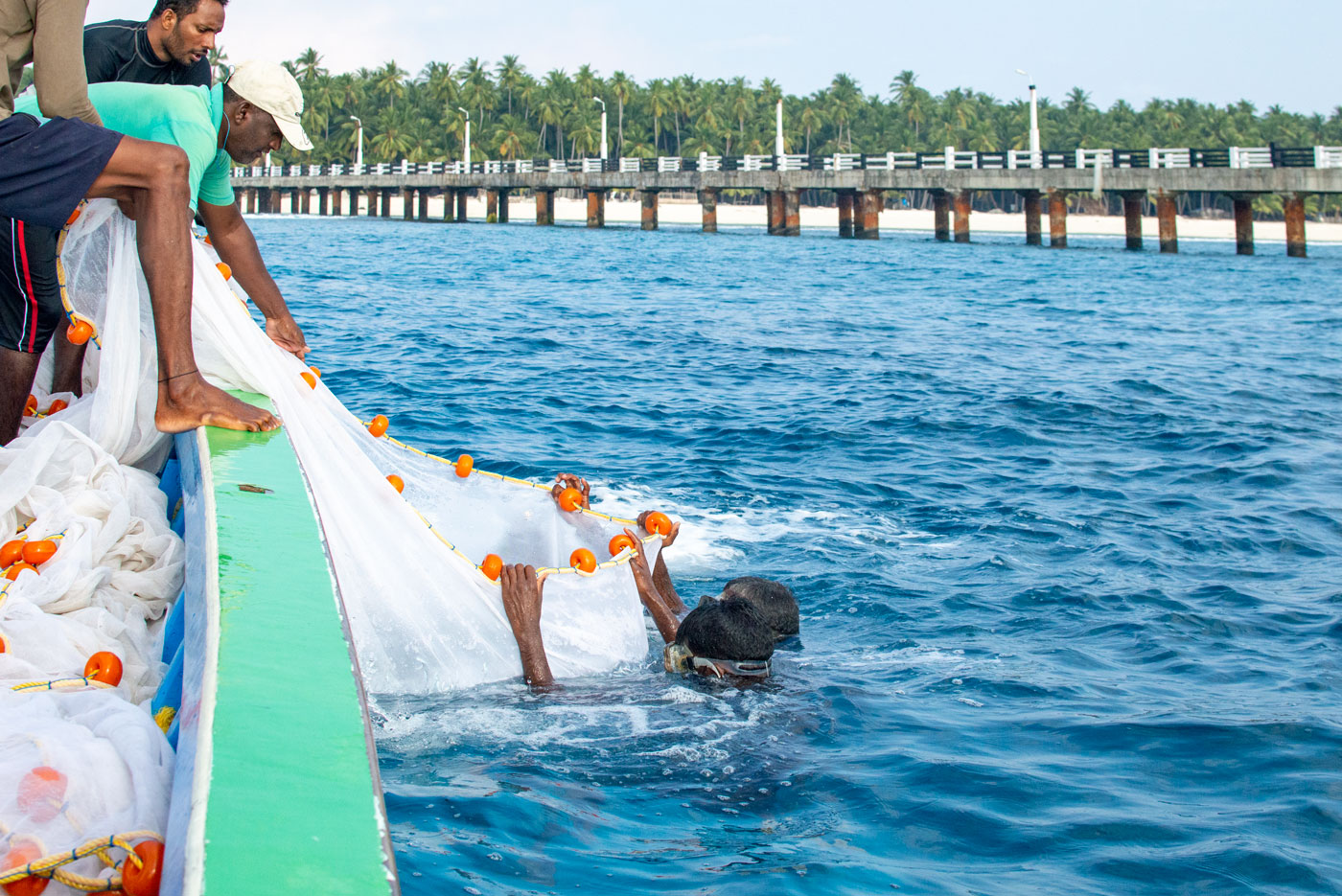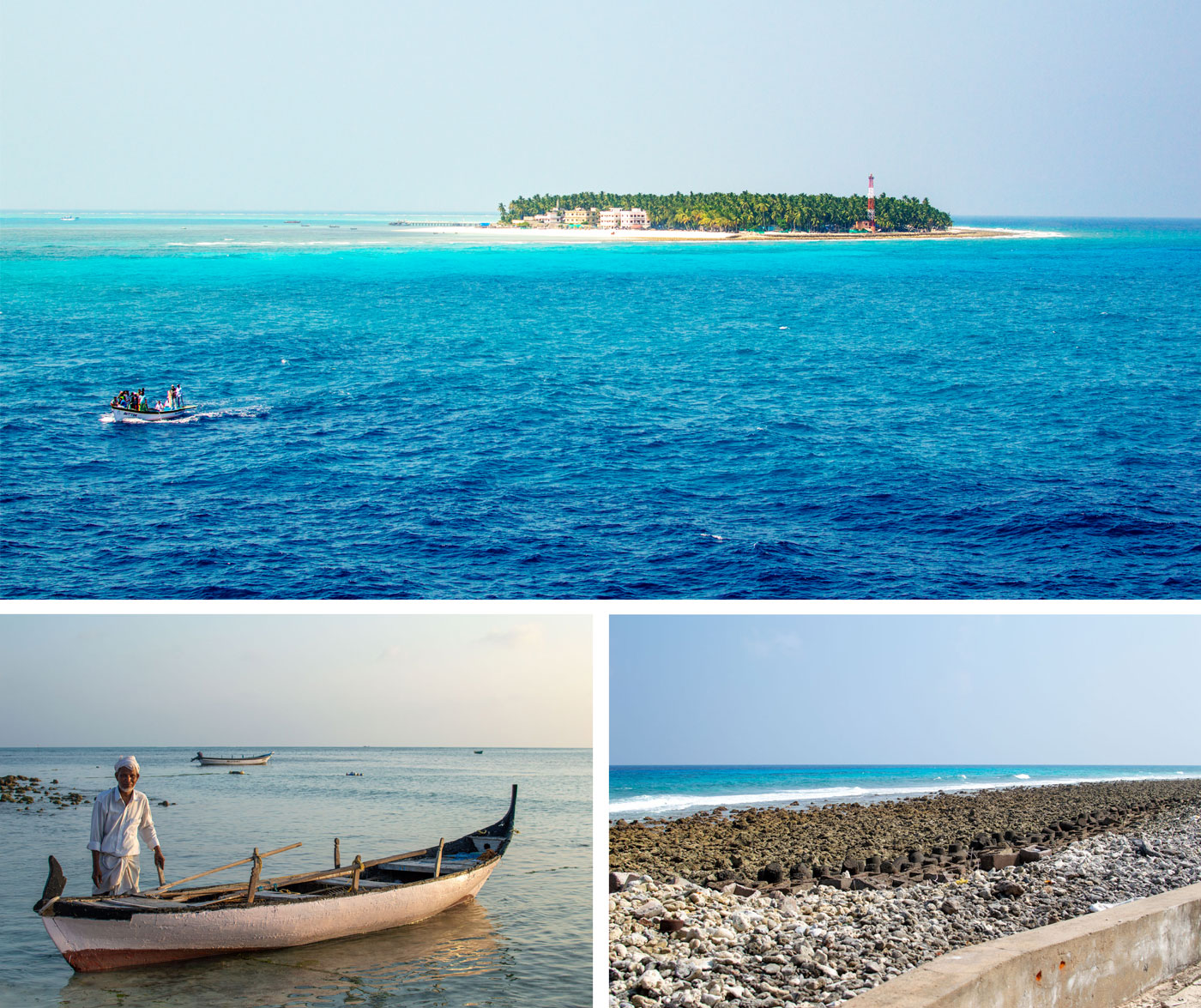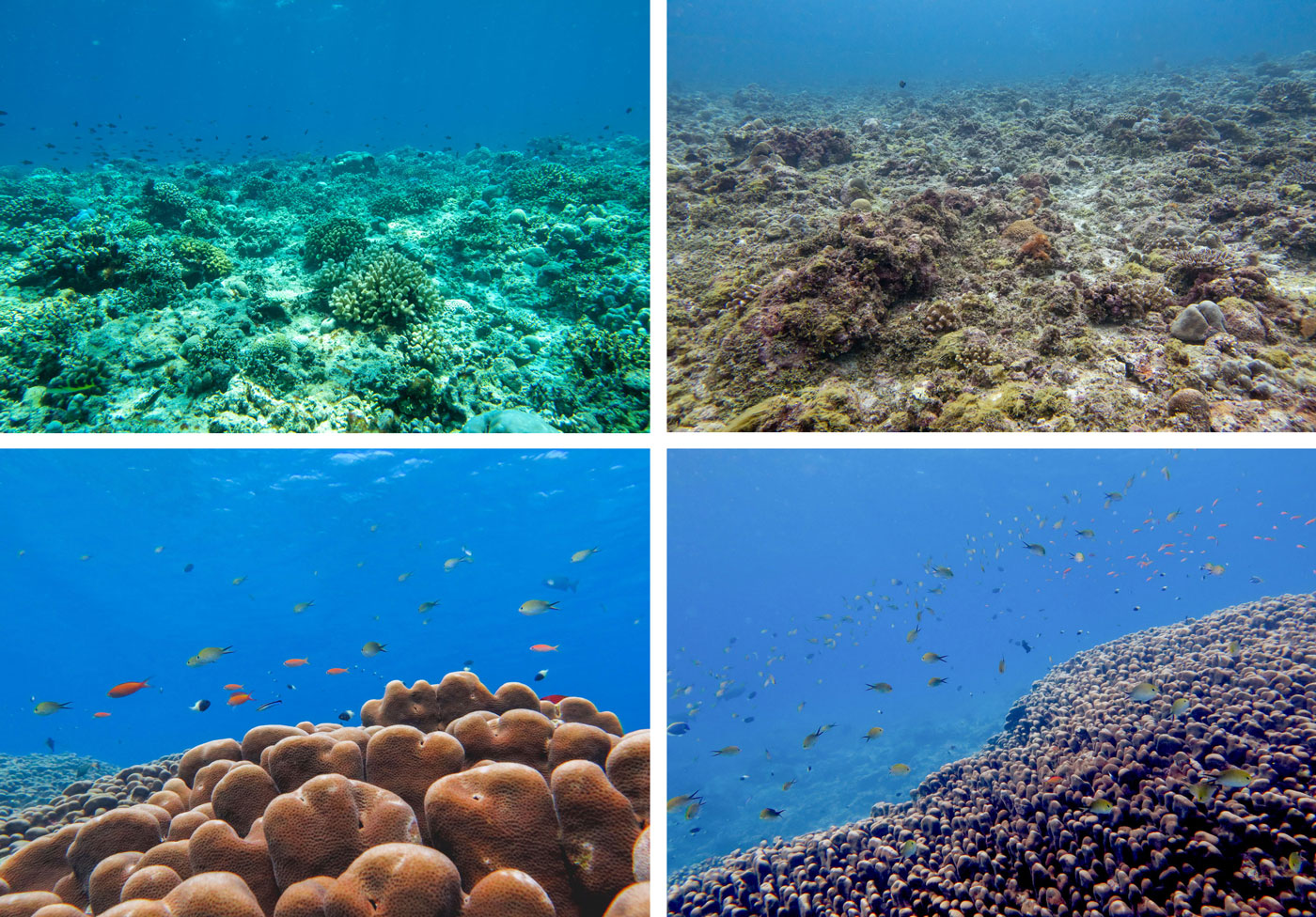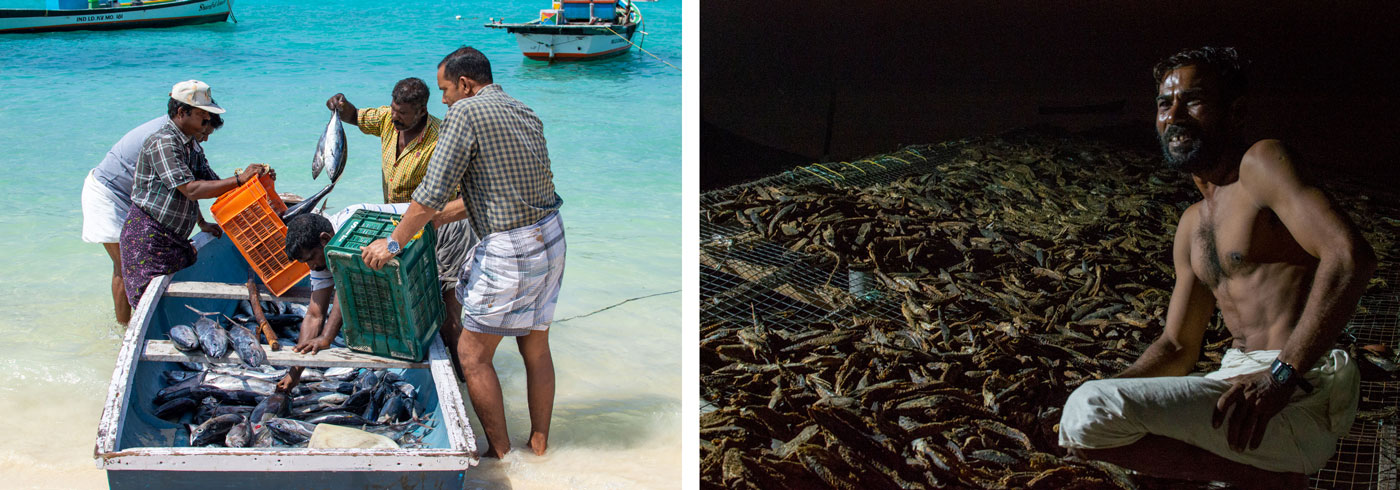The Great Coral Grief of Lakshadweep islands
India’s smallest union territory, just 1-2 metres above sea level on average – and where every seventh person is a fisherman – is losing its coral reefs and facing the impact of climate change at multiple levels

“As a boy, I was told our island rests on a large coral. The coral is all underneath, holding it up. And around us is a lagoon that protects us from the ocean,” says B. Hyder, a 60-year-old fisherman who lives on the island of Bitra.
“When I was younger, we could see the corals when the tide was low," adds 60-year-old Abdul Khadar, another fisherman on Bitra. “It was beautiful. Now there is not much left of them. But we need that coral to keep the big waves away.”
That coral – central to the stories, imaginations, lives, livelihoods and ecosystems of the islands of the Lakshadweep archipelago – is slowly bleaching away, along with many other changes that the fishermen here have been noticing over the decades.
“It’s simple. Nature has changed,” explains Muniyamin K. K. The 61-year-old from the island of Agatti began fishing when he was 22. “Those days, the monsoon arrived at the correct time [in June], but now we can’t tell when it will come. There’s less fish these days. We didn’t have to travel so far out for our catch back then, the shoals were all close by. But now people are gone for days, sometimes weeks, searching for fish.”
Agatti and Bitra, around seven hours apart by boat, are home to some of the most skilled fishermen in the Lakshadweep, India’s smallest union territory situated in the Arabian Sea off the coast of Kerala. ‘Lakshadweep’ in both Malayalam and Sanskrit means a hundred thousand islands. Reality, in our era, presents us with just 36, which together cover barely 32 square kilometres. The waters of the archipelago, though, are spread over 400,000 square kilometres and are rich in marine life and resources.
Every seventh person in this single-district UT is a fisherman – with over 9,000 people claiming that occupation in a population of just 64,500 (Census 2011).

Bitra (top) and the rest of Lakshadweep comprise the only coral islands in India. 'When I was younger, we could see the corals [foreground, bottom right] when the tide was low', says Abdul Khada (bottom left), a fisherman on Bitra. 'Now there is not much left of them'. (Photos: Sweta Daga/PARI)
Elders on the islands tell us they could once set their calendars by the monsoon’s arrival. But “now the sea is rough at any time – that’s not how it was,” says U. P. Koya, who, at 70, has four decades of experience as a fisherman here. “I was in maybe Class 5 when people from Minicoy island [some 300 kilometres away] came and taught us ‘pole and line’ fishing. From then on, in Lakshadweep, we mostly fish with that method only – we don’t use nets because they get caught on the corals and break them. We are able to find fish because of the birds, and with our compasses.”
In pole and line fishing, the fishermen stand at the railings or on special platforms on their vessels. A short, strong line with a robust hook at the end is attached to a pole, often made of fibre glass. It’s a more sustainable form of fishing, and used here mostly to catch shoals of the tuna species that inhabit the upper layers of the water. On Agatti and the other Lakshadweep islands, coconut and fish – mostly tuna – are the mainstay of meals.
Bitra is the smallest – 0.105 square kilometres, or around 10 hectares – and remotest of the 12 inhabited islands of this archipelago. It has soft, white sand beaches, coconut trees, and is surrounded by four shades of water – azure, turquoise, aquamarine and sea green. Tourists are not allowed here; once you’re on it, walking is the only way around, there are no cars or motorbikes, and even bicycles are rare. Census 2011 recorded only 271 residents on Bitra.
However, it has the largest lagoon in the UT – almost 47 square kilometres in area. And Bitra and the rest of Lakshwadeep comprise the only coral islands in India. That is, almost all its inhabited land is actually coral atolls. Its soils are largely derived from corals.
Corals are living organisms that make up the reefs and provide the ecosystem for marine life to thrive, especially fish. Coral reefs are a natural barrier, protecting these islands against the swelling of the seas, and keeping salt water out of the limited freshwater sources here.
Indiscriminate fishing particularly bottom trawling bu large mechanised boats with nets, depletes the baitfish and also harms the reefs and related biodiversity
Reefs also house small baitfish that are caught to lure tuna, and dozens of varieties of lagoon fish. These rich waters and reefs, the 2012 UNDP Lakshadweep Action Plan on Climate Change notes, provide up to 25 per cent of total fish catch in India. And the baitfish communities are quite central to fishing for tuna.
“We used to catch baitfish only after they had finished depositing their eggs, but now people just capture them anytime," says 53-year-old Abdul Rehman, a fisherman for over 30 years, in the district headquarters of Kavaratti, around 122 kilometres from Bitra. “The number of boats has increased, but catch has decreased.” Indiscriminate fishing, particularly bottom trawling by large mechanised boats with nets, depletes the baitfish and also harms the reefs and related biodiversity.
And that’s just part of the problem.
Severe climate patterns like El Nino raise sea surface temperatures and cause massive ‘coral bleaching’ – stripping the corals of colour and life, and reducing their ability to protect the islands. Lakshadweep has witnessed three mass coral bleachings – in 1998, 2010, and 2016. A 2018 study of the Nature Conservation Foundation (NCF), a Mysuru-based non-profit wildlife preservation and research organisation, shows that the reefs are in danger. The study found that absolute coral cover in the Lakshadweep islands fell sharply from 51.6 per cent in 1998 to 11 per cent in 2017 — in just about 20 years.
Bitra fisherman Abdul Koya, 37, says: “We recognised coral when we were 4 or 5 years old. We saw it wash up on shore, even before we went into the water. We use it to build our houses.”
While in Kavaratti, Dr. K. K. Idrees Babu, a scientist with the Department of Science and Technology, explains the declining coral: “There is a correlation between high sea surface temperatures and coral reefs. In 2016, sea temperatures were clocking 31 degrees Celsius and even higher!” Studies show that as recently as 2005, the reef areas saw temperatures of 28.92 C. In 1985, that was 28.5 C. Warming and a rise in water levels is a worry in islands where the average elevation is mostly 1-2 metres above sea level.

Top row: Severe climate patterns like El Nino raise sea surface temperatures and cause massive ‘coral bleaching’ – stripping the corals of colour and life, and reducing their ability to protect the islands. Bottom row: A large strand of the Pavona clavus coral in 2014, a 'potato patch' ecosystem and a haven for reef fish. But during the 2016 El Niño event, as temperatures rose, the polyps in the coral expelled their symbiotic algae and turned white. (Photos: Rohan Arthur, Nature Conservation Foundation, Mysuru)
The owner of the biggest boat – 53 feet long – in Kavaratti, Nijamudheen K., 45, also feels the changes. And says the loss of traditional knowledge adds to their problems: “My father, a fisherman, used to know where the catch would be, [that generation] had that information. We have lost that and often rely on FADs [fish aggregating devices]. When we don’t get tuna, we go after lagoon fish.” FADs, despite the high-tech sounding acronym, can simply be a raft or a floating tree log – that attract fish which then gather around or under them.
“Right now, though,” says Dr. Rohan Arthur, marine biologist and scientist who has worked on Lakshadweep for 20 years, “my main concern isn’t the biodiversity of the reefs, but their functional purpose. The survival of the people here depends on them. The reef isn’t just about the corals, but makes up a whole ecosystem. Think of it as an underwater forest – and a forest isn’t just about the trees.”
Dr. Arthur, who heads the Ocean and Coasts programme at the NCF, told us in Kavaratti that “The Lakshadweep reef has shown signs of resilience but the current rates of recovery are unable to keep up with climate change events. And that’s even without (considering) further anthropogenic stresses like overfishing.”
Climate events and processes have had other impacts, too, besides the bleaching events. Cyclones – Megh in 2015 and Ockhi in 2017 – also battered Lakshadweep. And department of fisheries data reflect sharp fluctuations in catch which fell from almost 24,000 tons (all tuna varieties) in 2016 to just over 14,000 tons in 2017 – a 40 per cent drop. In 2019, it fell to less than 19,500 tons from over 24,000 the previous year. There have been very good years too, but as the fishermen say, the entire process has become erratic and unpredictable.
And with global demand for reef fish mounting this past decade, fishermen here have increased their search for groupers, or large predatory fish, locally known as chammams.

Left: 'The number of boats has increased, but catch has decreased', say fishermen on Kavaratti island; here, bringing in tuna. Right: Abdul Koya on Bitra drying his catch. (Photos: Sweta Daga/PARI)
Ummer S., 39, from Agatti island – a fisherman and boat-maker for 15 years– explains why he fishes for groupers. “A lot of tuna used to be near the lagoon, but now we have to go 40-45 miles away for them. And it can take two weeks if we need to go to other islands. So then I fish for chammams at the same time. There is a market for them, but it’s troublesome, as to catch just one, you might have to have to wait an hour.”
Rucha Karkarey, a scientist studying developments in this field, told us in Bitra, “Grouper numbers have fallen over the years, corresponding to the declining health of the coral. And fishermen are responding to the uncertainty and climate change by going after more reef fish when tuna are not available, further reducing their numbers. We suggested that they don’t fish on the five days of the month that the fish are spawning.”
Bitra’s fishermen tried halting activity on those days, but found others were unwilling to do the same.
“Boys from Kiltan island were coming here to Bitra and fishing at night,” says Abdul Koya, speaking to us while sorting his dried fish. “This should not be allowed…it happens often and results in baitfish, reef and tuna all declining.”
“There are also many more big boats coming in from the mainland, even from other countries, with bigger nets,” says B. Hyder, who is also the Bitra panchayat chairperson. “We are not able to compete with them on our small boats.”
Meanwhile, weather and climate events are growing more erratic. “I remember only two cyclones until the age of 40,” says Hyder. “But they’ve happened more frequently in the past few years, and they break the reefs.”

Left: 'We used to catch baitfish only after they had finished depositing their eggs, but now people just capture them anytime', says Abdul Rehman, a fisherman on Kavaratti island. Right: The owner of the biggest boat in Kavaratti, Nijamudheen K., also feels the change. (Photos: Sweta Daga/PARI)
In Kavaratti, Abdul Rehman, too, speaks of cyclone impact “Earlier we used to see skipjack tuna close to the reefs, but since Ockhi, all that has changed. In the 1990s, we just spent 3-4 hours in the ocean. We had no mechanised devices, but the supply was so abundant we could finish quickly. Now we have to be out for the full day or longer. We don’t want to go reef fishing, but if tuna becomes unavailable, we do sometimes go for reef fish.”
Rehman also says that “the number of boats – and there are much bigger ones now – has increased. But catch has decreased, and our operational costs have also risen.”
Fishermen’s earnings are not easy to estimate and vary from month to month, says Dr. Arthur. “Several of them also hold other jobs, making it difficult to separate what comes directly from fishing.” But it’s obvious the “last decade has seen large fluctuations in incomes.”
Lakshadweep, he says, “is going through two major changes at the same time, with climate change damaging the coral reefs and impacting the fish supply, and thereby [affecting] the fisherman and their livelihoods. Lakshadweep, though, does have the potential to be what we call a ‘bright spot’. If we are able to help the reefs recover by protecting the marine life ecosystem, then we have a chance of preserving them for much longer.”
Back in Kavaratti, Nijamudheen K. grumbles, “Twenty years ago there were so many fish that we could be done at work in 4 or 5 hours, but now it takes us days to fill the boat. Monsoons have shifted, and we don’t know when to expect rain. The seas are rough even in the fishing season. We used to move our boats fully onto the shore – a hard task – in June because we thought that’s when the monsoon comes. But then the monsoon takes another month! Our boats were just stuck on shore, and we don't know whether to move them again or wait. So we are stuck too."
PARI’s nationwide reporting project on climate change is part of a UNDP-supported initiative to capture that phenomenon through the voices and lived experience of ordinary people.
Want to republish this article? Please write to zahra@ruralindiaonline.org with a cc to namita@ruralindiaonline.org

 Locations
Locations